https://articles.mercola.com/sites/articles/archive/2014/07/03/stress-memory-loss.aspx
Day: 04/01/2018
BBC News: Man has ‘world’s worst’ super-gonorrhoea
I saw this on the BBC and thought you should see it:
Man has ‘world’s worst’ super-gonorrhoea – http://www.bbc.co.uk/news/health-43571120
New Cannabis Capsule is SO Powerful It’s Going to Completely Replace ALL Pain Killers.
New Cannabis Capsule is SO Powerful It’s Going to Completely Replace ALL Pain Killers – Enlightened Consciousness
https://www.enlightened-consciousness.com/new-cannabis-capsule-is-so-powerful-its-going-to-completely-replace-all-pain-killers/
Industrial farming is one of the worst crimes in history.
Industrial farming is one of the worst crimes in history | Books | The Guardian
https://www.theguardian.com/books/2015/sep/25/industrial-farming-one-worst-crimes-history-ethical-question
Is the speed of light slowing down?

Modern physics rests on the foundational notion that the speed of light is a constant, which in a vacuum is 186,000 miles per second (299,792 km/s). Einstein established this within his theory of general relativity, first developed in 1906 when he was just 26 years-old. But what if it doesn’t? A few albeit controversial incidents in recent years challenge the idea that light always travels at a constant speed. And in fact, we’ve known for a long time that there are several phenomena that travel faster than light, without violating the theory of relativity.
For instance, whereas traveling faster than sound creates a sonic boom, traveling faster than light creates a “luminal boom.” Russian scientist Pavel Alekseyevich Cherenkov discovered this in 1934, which won him the Nobel Prize in Physics in 1958. Cherenkov radiation can be observed in the core of a nuclear reactor. When the core is submerged in water to cool it, electrons move through the water faster than the speed of light, causing a luminal boom.
On another front, while no particle with mass can travel faster than light, the fabric of space can and does. According to Inflation Theory, immediately after the Big Bang, the universe doubled in size and then doubled again, in less than a trillionth of a trillionth of a second, much faster than the speed of light. More recently, astronomers have discovered that some galaxies, the distant ones anyway, move away from us faster than light speed, supposedly, pushed along by dark energy. The best estimate for the rate of acceleration for the universe is 68 kilometers per second per megaparsec.
Quantum entanglement is another example of a faster-than-light interaction that doesn’t violate Einstein’s theory. When two particles are entangled, one can travel to its partner instantaneously, even if its mate is on the other side of the universe. Einstein called this, “Spooky action at a distance.” The last example is a theoretical one (at least for now). If we were somehow able to warp or fold space-time, such as with a wormhole, it would allow a spacecraft to pass instantaneously from one side of space to another.

Einstein says that light acts pretty much the same throughout the universe. There’s a problem though. Today, scientists marvel at just how homogenous the universe is. One way we can tell, is by investigating the cosmic microwave background (CMB). This is essentially the light left over from the Big Bang, located in every corner of the universe.
No matter where you examine it, it’s always the same temperature, -454 Fº (-270 Cº). If that’s the case and light travels at a constant speed, how could it have made it from one edge of the universe to the other? To date, scientists have no idea, other than to say, some peculiar conditions must have existed in that early “inflation field.”
The idea of light slowing down over time was first proposed by Professor João Magueijo, from Imperial College London and his colleague, Dr. Niayesh Afshordi, of the Perimeter Institute in Canada. Their paper was submitted to Astrophysics in late 1998 and published shortly thereafter. Unfortunately, the proper instrumentation necessary to investigate the CMB to search for clues supporting it, wasn’t available at the time.
Magueijo and Afshordi eliminated the inflation field altogether. Instead, they argue that the intense heat that existed when the universe was young, ten thousand trillion trillion Cº, allowed particles—including photons (light particles), to move at an infinite speed. Light therefore traveled to every point in the universe, causing a uniformity in the CMB that we can observe today. “We can say what the fluctuations in the early universe would have looked like,” Afshordi told The Guardian, “and these are the fluctuations that grow to form planets, stars, and galaxies.” An experiment the following year lent credence to Magueijo and Afshordi’s theory.

The cosmic microwave background.
In 1999, Lene Vestergaard Hau at Harvard stunned the world, after she conducted an experiment where she slowed light down to just under 40 mph (64 kph). Hau studies materials at a few degrees above absolute zero. In such an environment, atoms move very slowly. They begin to overlap, turning into what’s known as the Bose-Einstein condensate. Here, the atoms become one big cloud, and behave like one giant atom.
Hau shot two lasers through such a cloud, comprised of sodium atoms 0.008 inches (0.2 mm) wide. The first blast changed the quantum nature of the cloud. This increased the cloud’s refractive index, which slowed the second beam to 38 mph (61 kph). Refraction is when light or radio waves are bent or distorted when passing from one medium into another.
A discovery in 2001 also lent credence to the variable light theory. The eminent astronomer John Webb made an observation while studying quasars in deep space. Quasars are luminescent bodies billions of times as massive as our sun, which are powered by black holes. Its luminosity comes from an accretion disk, made up of gas, enveloping it.
Webb found that one particular quasar when nearing interstellar clouds, absorbed a different type of photon than would’ve been predicted. Only two things could explain this. Either its charge had changed or the speed of light had. In 2002 an Australian team, led by theoretical physicist Paul Davies, found that it couldn’t have changed polarity, as this would’ve violated the Second Law of Thermodynamics.

Artist’s impression of the quasar 3C 279.
Another breakthrough study in 2015 further challenged this staple of science. Scottish physicists from Glasgow and Heriot-Watt universities successfully slowed a photon at room temperature, without refraction. They basically built a racetrack for photons. It was made so that two photons raced side-by-side.
One track was unencumbered. The other held a “mask” which resembled a target with a bullseye. In the center was a passageway so narrow, the photon had to change shape to squeeze through. It slowed that photon down about one micron (micrometer), not a lot, but enough to prove that light doesn’t always travel at a constant speed.
By now, instrumentation had improved to the point where the CMB can be successfully probed. As such, in 2016 João Magueijo and Niayesh Afshordi published another paper, this time in the journal Physical Review D. They are currently measuring different areas of the CMB, and studying the distribution of galaxies, seeking clues to support their claim that light in the universe’s earliest moments broke free of it’s presumed speed limit.
Again, this is a fringe theory. And yet, the implications are astounding. “The whole of physics is predicated on the constancy of the speed of light,” Magueijo told Vice’s Motherboard. “So we had to find ways to change the speed of light without wrecking the whole thing.” Their calculations should be complete by 2021.
The U.S. military has a weapon that can create human speech out of thin air

The purpose of a modern military is hopefully not to go out and fight people outright but to scare them from attacking you, thus keeping the peace. At least, that’s how nuclear deterrence works. On the other side, the Department of Defense has also developed what it calls a Joint Non-Lethal Weapons Program (JNLWP), whose purpose is to create weapons and other contraptions that can incapacitate but not kill their targets, reports Defense One.
One device that the lab is making is an energy weapon that can use lasers to create the Laser-Induced Plasma Effect, which allows it to alter atoms and create words out of thin air. For now, it makes strange human-like sounds, but intelligible words are coming within the next three years. The goal is to have the weapon create particular noises or heat at distant points in space. Anyone between the weapon and the place where it creates this effect would be unaffected. The current range of such a blast is projected at “tens of kilometers”.
This weapons system is comprised of a femtosecond laser that can shoot bursts of focused light for around 10-15 seconds and a second nano-laser. The first laser rips electrons from air molecules and creates a plasma ball, which is then hit by the second laser, tuned to a very specific range of wavelengths. In this way, the device can control the plasma field, producing lights and increasingly more clear noises.
David Law, in charge of the JNLWD’s technology division, is very bullish on their tech:
“We’re this close to getting it to speak to us. I need three or four more kilohertz,” said Law.
Check out the device’s demonstration (you might want to lower the volume first):
In DoD speak, the idea behind non-lethal weapons is to minimize fatalities and permanent injuries to personnel, with the intention to produce “reversible effects.” They can fill the gap between the stages of “shouting and shooting,” hopefully leading to a de-escalation of force. Such tools can also let the commanding officer bolster or pull back their response to the target as the situation fluctuates.
One particular place where non-lethal weapons can come in handy is complex urban terrains packed with civilians. Other scenarios where they can be utilized include security at checkpoints, serving as warnings in convoy operations, providing security in humanitarian operations and for crowd management.
Here is more in-depth footage from the testing of the energy weapon:
There’s Mounting Evidence The African Continent Is Splitting in Two
A huge crack has appeared in Kenya, and it’s growing.
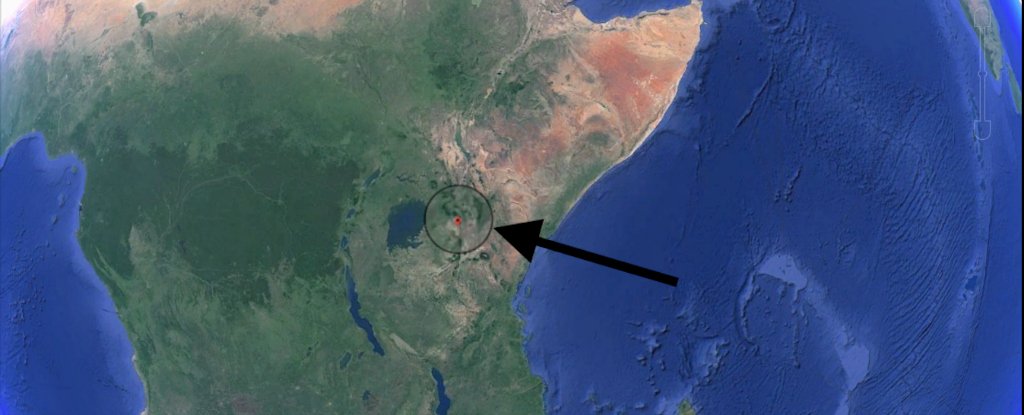
A large crack, stretching several kilometres, made a sudden appearance recently in south-western Kenya.
The tear, which continues to grow, caused part of the Nairobi-Narok highway to collapse and was accompanied by seismic activity in the area.
The Earth is an ever-changing planet, even though in some respects change might be almost unnoticeable to us. Plate tectonics is a good example of this.
But every now and again something dramatic happens and leads to renewed questions about the African continent splitting in two.
The Earth’s lithosphere (formed by the crust and the upper part of the mantle) is broken up into a number of tectonic plates.
These plates are not static, but move relative to each other at varying speeds, “gliding” over a viscous asthenosphere.
Exactly what mechanism or mechanisms are behind their movement is still debated, but are likely to include convection currents within the asthenosphere and the forces generated at the boundaries between plates.
These forces do not simply move the plates around, they can also cause plates to rupture, forming a rift and potentially leading to the creation of new plate boundaries.
The East African Rift system is an example of where this is currently happening.
The East African Rift Valley stretches over 3,000 km from the Gulf of Aden in the north towards Zimbabwe in the south, splitting the African plate into two unequal parts: the Somali and Nubian plates.
Activity along the eastern branch of the rift valley, running along Ethiopia, Kenya and Tanzania, became evident when the large crack suddenly appeared in south-western Kenya.
Why does rifting happen?
When the lithosphere is subject to a horizontal extensional force it will stretch, becoming thinner. Eventually, it will rupture, leading to the formation of a rift valley.
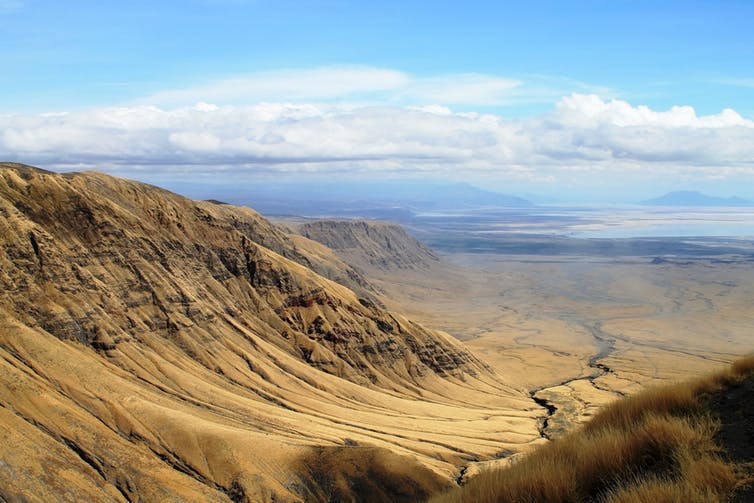 (Shutterstock)
(Shutterstock)
This process is accompanied by surface manifestations along the rift valley in the form of volcanism and seismic activity.
Rifts are the initial stage of a continental break-up and, if successful, can lead to the formation of a new ocean basin.
An example of a place on Earth where this has happened is the South Atlantic ocean, which resulted from the break up of South America and Africa around 138m years ago – ever noticed how their coastlines match like pieces of the same puzzle?
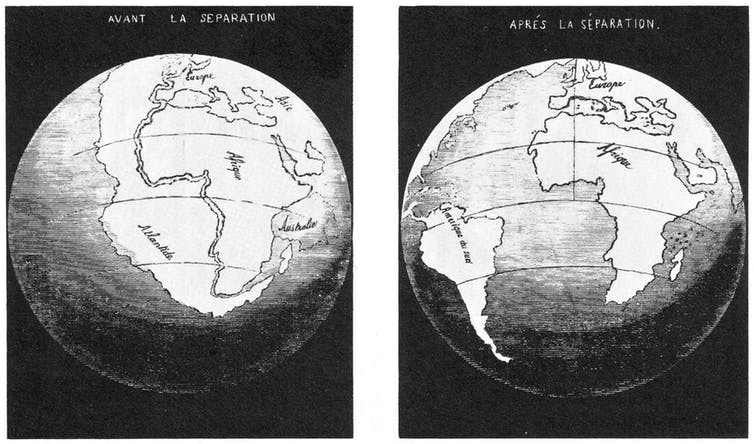 (Snider-Pellegrini/Wikimedia)
(Snider-Pellegrini/Wikimedia)
Continental rifting requires the existence of extensional forces great enough to break the lithosphere.
The East African Rift is described as an active type of rift, in which the source of these stresses lies in the circulation of the underlying mantle.
Beneath this rift, the rise of a large mantle plume is doming the lithosphere upwards, causing it to weaken as a result of the increase in temperature, undergo stretching and breaking by faulting.
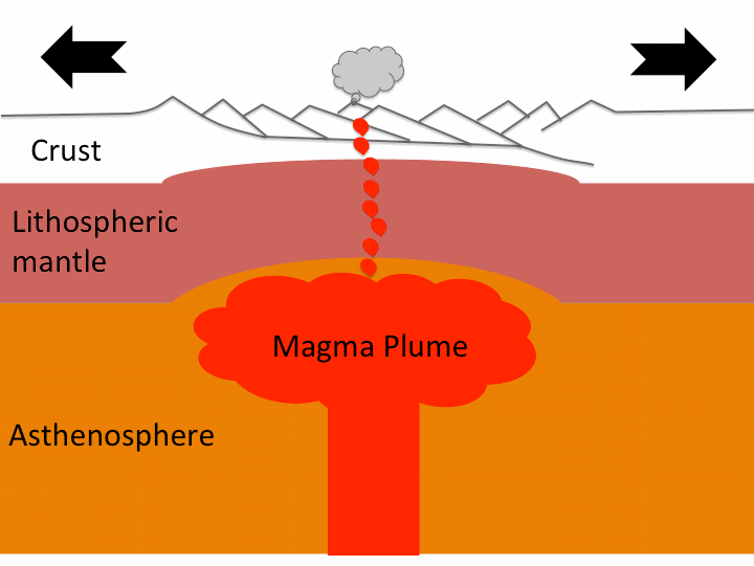 (Snider-Pellegrini/Wikimedia)
(Snider-Pellegrini/Wikimedia)
Evidence for the existence of this hotter-than-normal mantle plume has been found in geophysical data and is often referred to as the “African Superswell”.
This superplume is not only a widely-accepted source of the pull-apart forces that are resulting in the formation of the rift valley but has also been used to explain the anomalously high topography of the Southern and Eastern African Plateaus.
Breaking up isn’t easy
Rifts exhibit a very distinctive topography, characterised by a series of fault-bounded depressions surrounded by higher terrain. In the East African system, a series of aligned rift valleys separated from each other by large bounding faults can be clearly seen from space.
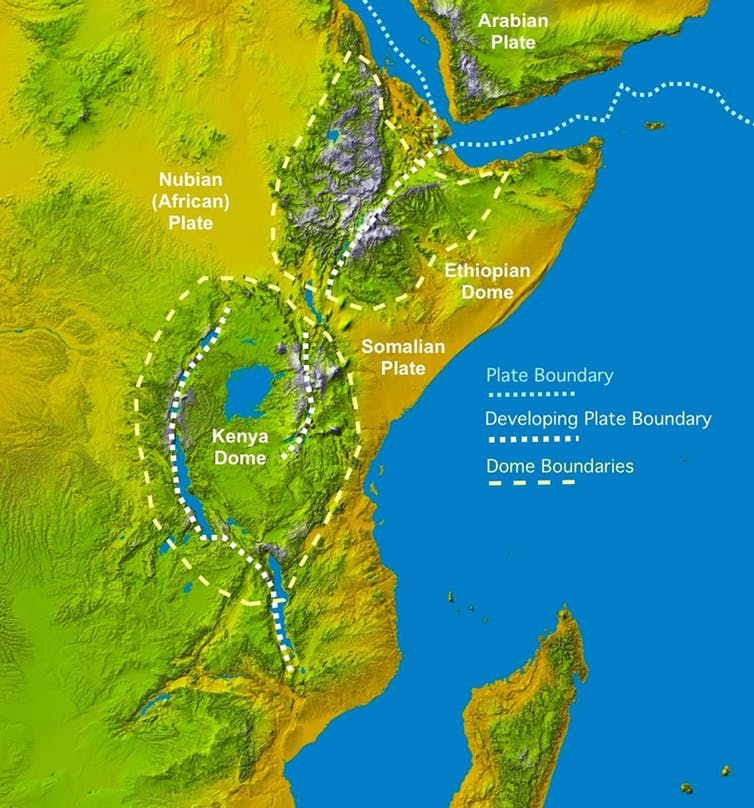 (James Wood/Alex Guth, NASA)
(James Wood/Alex Guth, NASA)
Not all of these fractures formed at the same time, but followed a sequence starting in the Afar region in northern Ethiopia at around 30m years ago and propagating southwards towards Zimbabwe at a mean rate of between 2.5-5 cm a year.
Although most of the time rifting is unnoticeable to us, the formation of new faults, fissures and cracks or renewed movement along old faults as the Nubian and Somali plates continue moving apart can result in earthquakes.
However, in East Africa most of this seismicity is spread over a wide zone across the rift valley and is of relatively small magnitude. Volcanism running alongside is a further surface manifestation of the ongoing process of continental break up and the proximity of the hot molten asthenosphere to the surface.
A timeline in action
The East African Rift is unique in that it allows us to observe different stages of rifting along its length. To the south, where the rift is young, extension rates are low and faulting occurs over a wide area. Volcanism and seismicity are limited.
Towards the Afar region, however, the entire rift valley floor is covered with volcanic rocks.
This suggests that, in this area, the lithosphere has thinned almost to the point of complete break up. When this happens, a new ocean will begin forming by the solidification of magma in the space created by the broken-up plates.
Eventually, over a period of tens of millions of years, seafloor spreading will progress along the entire length of the rift.
The ocean will flood in and, as a result, the African continent will become smaller and there will be a large island in the Indian Ocean composed of parts of Ethiopia and Somalia, including the Horn of Africa.
Dramatic events, such as sudden motorway-splitting faults or large catastrophic earthquakes may give continental rifting a sense of urgency but, most of the time, it goes about splitting Africa without anybody even noticing.
Can You Be Obese But Heart-Healthy? Study Says No
A new British study of nearly 300,000 people dismantles the “obesity paradox,” a theory that claims being obese does not necessarily raise heart risks.
Instead, the researchers found, obesity increases the risk for heart attacks, strokes and high blood pressure, and the risk increases the more fat one carries around the waist.
“The higher total body fat or fat around the abdomen, the greater the risk of heart disease and stroke in individuals without existing disease,” said lead researcher Dr. Stamatina Iliodromiti. She is a clinical lecturer in obstetrics and gynecology at the University of Glasgow in Scotland. “There is no protective effect of fat, as some people believe.”
And whatever your particular body mass index (BMI), losing a few pounds will only improve your health, Iliodromiti added.
“There are no downsides to losing weight,” she said.
In the study, the researchers found that people with a BMI between 22 and 23 had the lowest risk of heart disease. BMI is a measurement scale based on weight and height. As BMI increased above 22, however, the risk increased 13 percent for even moderate amounts of weight gain.
In addition, for women with a waist size of 29 inches and men with a waist size of 32 inches, each 5-inch increase raised the risk of heart disease by 16 percent, the findings showed.
An increased risk for heart disease was also seen as waist-to-hip, waist-to-height ratios and percentage of body fat increased. These measures are reliable ways to gauge the amount of fat someone carries, Iliodromiti said.
One lifestyle expert said this latest research should put an end to any debate.
“There is a limit to how many nails should be required to seal the coffin of the obesity paradox,” said Dr. David Katz, director of the Yale-Griffin Prevention Research Center in Derby, Conn.
“The appearance of the paradox is due to the well-known association between serious illness and weight loss,” Katz said. “There really, truly, is no obesity paradox.”
A number of studies have indicated that overweight and obesity reliably predict greater health risk over time, he said.
For example, a study in the Feb. 28 issue of the journal JAMA Cardiology found it’s a myth that people with heart disease who are overweight or obese live longer than those who are normal weight.
Rather than living longer than normal-weight people, the Northwestern researchers found that those who are obese are just diagnosed at a younger age. They spend more of their lives with heart disease, but actually live shorter lives.
Instead of debating whether the obesity paradox is real, Katz believes time is better spent in finding ways to curb the obesity epidemic.
The report was published March 16 in the European Heart Journal.
Freezing ‘Hunger Nerve’ Might Help Shed Pounds
The nerve’s proper name is the posterior vagal trunk and it’s part of the larger vagus nerve that’s linked with the heart, lungs and digestive system, ABC News reported.
The phase 1 study results included 10 overweight patients, ages 27-66. Researchers inserted a probe into the patients’ backs in order to freeze the hunger nerve for two minutes. The goal was to shut down the hunger signal, explained Dr. David Prologo, an interventional radiologist at Emory University School of Medicine in Atlanta.
Patients were checked seven, 45, and 90 days after the procedure and at each appointment, the patients said they had decreased appetite, ABC News reported.
During the follow-up, the patients lost an average of 3.6 percent of their body weight, and had a nearly 14 percent decrease in their body mass index (BMI), an estimate of body fat based on weight and height.
The long-term effectiveness is unknown, ABC New reported.
The study was presented at the Society for Interventional Radiology Conference this week in Los Angeles. The next step would be a phase 2 study.
10 Valuable Life Lessons to Learn from Children
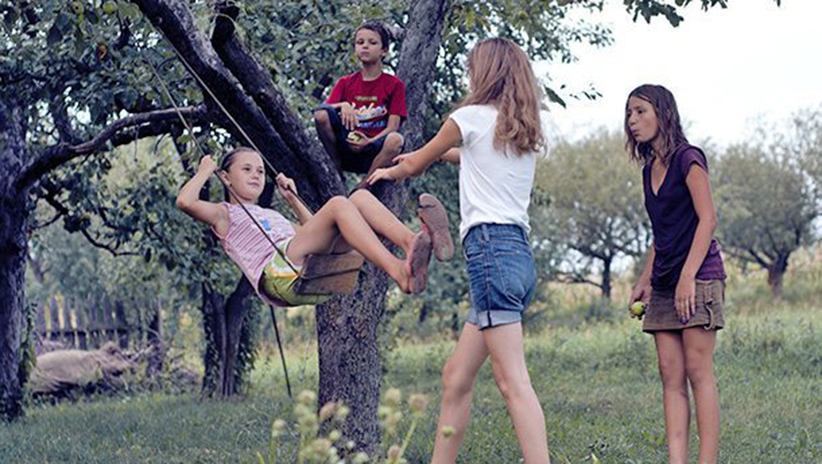
“The pursuit of truth and beauty is a sphere of activity in which we are permitted to remain children all our lives.” ~ Albert Einstein
I am a Mom to two awesome boys. They have taught me more in the last 7 years than I could have learned in the 25 years I was without children. Here are,
10 Valuable Life Lessons to Learn from Children
1. Keep Discovering. Keep Exploring
From discovering their hands and feet as infants to discovering that monsters really do not live in the closet or under the bed. From exploring letting go of what held them up and finding out they can put one foot in front of the other to walk, to exploring a new sport they were so intimidated by before and finding out they are really good at it. They have taught me to keep exploring and keep discovering. Discovery can be so rewarding, but we have to be willing to open ourselves to it. We have to continue to spark our curiosities and to stop assuming we know the answers. It is amazing what happens when we approach life knowing we actually know nothing at all.
“We shall not cease from exploration, and the end of all our exploring will be to arrive where we started and know the place for the first time.” ~ T. S. Eliot
2. Be yourself. “…those that mind don’t matter and those that matter don’t mind”
My oldest son has dressed himself since age 2. One summer day at age 3 he decided to wear his bright orange bubble vest along with some shorts and rain boots. We were going to get ice cream and that is how he wanted to go. Hand in hand, we went. There were plenty of people there and all of them looking right at him and smiling (some laughing). He was very comfortable with the attention and was more into the ice cream than at the kids who were staring at him. He was himself. To him, it was about self-expression and it did not matter who laughed or pointed. He was comfortable in his own skin, orange bubble jacket and rain boots. That day, he taught me to be comfortable in mine as well.
“Be yourself; everyone else is already taken.” ~ Oscar Wilde
3. Dance like no one is watching.
Put some dance music on and watch how children react. Most of them don’t think twice about it, they just dance. At weddings, at school dances, at parties, they always dance. They dance with whatever rhythm they may have and they don’t care who is watching. What do the adults do? They stand around and watch the kids or continue their conversation. I have joined my oldest son many of times on a dance floor full of kids. It was fun, I danced with whatever rhythm I thought I had and I danced like nobody was watching.
“Dance as though no one is watching you, Love as though you have never been hurt before, Sing as though no one can hear you, Live as though heaven is on earth.” ~ Souza
4. Cuddling is underrated.
It is my pleasure to cuddle with my children. I enjoy having their little hands in mine. I enjoy feeling their little arms around my neck and having them curled up on my lap. Whenever they want to cuddle, I CUDDLE! It is those moments I treasure most because one day, they will be too big to curl up on my lap and too cool to put their arms around my neck.
5. Keep Dreaming and develop a plan.
I asked my son what he wanted to be when he grows up and he said a DJ and a Car Designer. He has elaborate plans on how he will achieve this. He is 7 years old and this dream is completely attainable for him. I admire this and have told him I support him in whatever he wants to do and to let me know what he needs from me so he can become what he wants to be. As adults, we become so distracted by our responsibilities (job, children, etc) that we have let go of our long lost dreams of becoming whatever it was we wanted to be. I understand being an astronaut may be far-reaching for many of us now, but studying astronomy is not. Looking through a telescope and admiring the universe is not. You had dreams of becoming a musician? Pick up an instrument, take some lessons and sing away! Show your children that dreams do not have to stay dreams.
“All our dreams can come true if we have the courage to pursue them.” ~ Walt Disney
6. Have Patience.
I have learned patience from the day I found out I was pregnant. From those long 40 weeks of pregnancy to the 15+ labor hours with my first and a nice 8 labor hours with my second. Patience is learned early. Patience was also learned while up at 4 am with a wide-awake infant and while teaching my 5-year-old how to read the words Cow, Car, and Dog. Although I have not mastered patience, my children are sure to help me every single day.
“Our patience will achieve more than our force.” ~ Edmund Burke
7. A messy home is not the end of the world.
I would not consider myself OCD, however, I feel a clean home is a happy home. I say this knowing my children and the dog completely disagree. I like things in their place, my floors spotless and the kitchen sink free of dirty dishes. With this said, I also now understand, toys are best all over the place and keep the kids entertained while I try to prepare dinner. Muddy paw prints on the floor make for a good laugh after the fact and the mess made by the kid’s fuels exploration, imagination, and discovery. A mess is just that, a mess, it can be cleaned up and is not the end of the world.
8.Take risks.
Jumping from couch to couch, dangling off of monkey bars upside down, rolling right off the bed without the slightest concern of the drop to the floor, attempting to jump into the pool before I make it in to catch them, you get the picture. I am sure there are many more events to come that will give me minor heart attacks, but the fearless attitude a child possess is something to be admired. Although my oldest child is a bit more cautious than other children, the risk-taking that children feel comfortable with should be a reminder to us that we will never know the result unless we try it. I am not talking about the skydiving or bungee jumping risks, I am talking about the job change or even that new haircut risk. Assumptions do not do anything but create a false sense of security or self-doubt. Stop assuming and do it. If you fall, get up clean yourself up and either try again or move on to the next risk you have been contemplating over.
“Children have a lesson adults should learn, to not be ashamed of failing, but to get up and try again. Most of us adults are so afraid, so cautious, so ‘safe,’ and therefore so shrinking and rigid and afraid that it is why so many humans fail. Most middle-aged adults have resigned themselves to failure.” ~ Malcolm X
9. Fill your heart with Love.
Although this seems cliche, the unconditional love I have for my children is something I only found to be true when I had children. It is so hard to verbalize. It is a love encompassed by so many other feelings. To name the ones I am able to verbalize best: joy, admiration, respect, appreciation, reward, pride, anxiety, worry, adoration and amazement. I am so very grateful to be able to feel and do the unconditional love I have for them and am even more grateful and humbled that the love I give to them, they return to me every day.
“There are two basic motivating forces: fear and love. When we are afraid, we pull back from life. When we are in love, we open to all that life has to offer with passion, excitement, and acceptance. We need to learn to love ourselves first, in all our glory and our imperfections. If we cannot love ourselves, we cannot fully open to our ability to love others or our potential to create. Evolution and all hopes for a better world rest in the fearlessness and open-hearted vision of people who embrace life.” ~ John Lennon
10. Treasure the Time given to you.
The most important lesson I have learned from my children (so far) is the immeasurable value of time and to treasure and enjoy the time given to you. The last 7 years of motherhood have gone so very fast. The quote “The days are long, but years are short” is an understatement. Yes, those sleepless nights with my youngest makes my days very long; but he is now on the verge of walking! When did that happen?? Yes, those days when my oldest has an attitude because he would rather play a video game than head to the park for some outside play are long; but he is headed to the 3rd grade in the fall. When did that happen??
Time is constant, the hours pass, the years pass and I am consciously making an effort to ENJOY my time with my children. I enjoy the time I discover and explore with them; the time I am not feeling so good about myself and my oldest tells me I am the most beautiful woman in the world, the time we have a dance party in the kitchen; the time we all cuddle as a family in pj’s watching a movie; the time we share our dreams and talk about our plans to reach them; the time when my patience is tested and I get through it a little more patient than the day before; the time I try to clean the house, step on toys and trip over a remote control car; the time when I watch my oldest try to swim from one side of the pool to the other unassisted for the first time and the time I hear I love you thiiiiiissss much and I reply
“I love you more!” and hear back
“I love YOU more!”.
Time is a gift given to us, we have the responsibility of doing something wonderful with it. Create memories, give love and most importantly, ENJOY.
What lessons have you learned from interacting with children? You can share one of these lessons with us in the comment section below 🙂